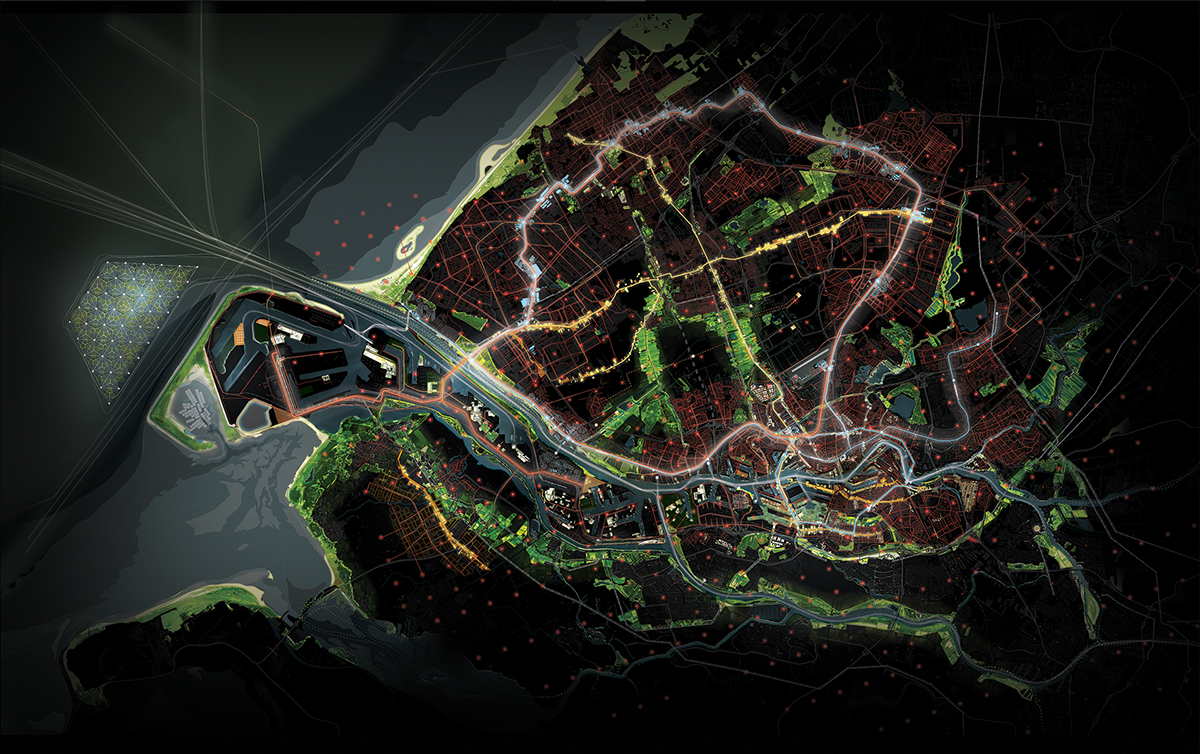
The four strategies combined into one future perspective for the Rotterdam region.
Designing with Flows
The IABR–Project Atelier Rotterdam studied opportunities for the urban metabolism framework to contribute to the sustainable development of the city. To this end, nine vital flows were identified: goods, people, waste, biota, energy, food, fresh water, air, and sand & clay. The Atelier developed a methodology – a design methodology, or the interaction between thinking and doing – beginning with the identification and mapping of the waste per flow, followed by the exploration of opportunities to create prospects for the city and the region. To hold the impact of these nine flows in a firm grasp, they have been analyzed on two levels: that of the Rhine Valley and that of Greater Rotterdam.
On both levels, this methodology led to the identification of specific Rotterdam features that were then linked to current global and local developments to prioritize them in terms of urgency – for instance, recovering phosphates instead of extracting them from finite sources. This has resulted in different design perspectives for each flow. One example: the significant and high-volume flow of goods through Rotterdam that lacks economic spin-off and therefore requires a different design challenge.
"All design proposals include a new, integrated perspective in which economic, ecological, and spatial diversification is coupled with a comprehensive reading of city, nature, and landscape."
Instead of simply selecting the most urgent challenge per flow, with the risk of not making the most of the pragmatic coupling or interaction of flows, the Atelier focused on design strategies that improve flows in a visible and recognizable context within the city. This has resulted in four strategies: catalyzing quality flows; channeling waste flows; recovering raw materials, and reducing transport movements. In terms of the City of Rotterdam: Catalyzing Re-Industrialization, Channeling (Energy) Waste, Collecting Resources, and Creating Biotopes. These strategies revolve around combating waste by strategically linking flows, and include various design projects.
1. Catalyzing Re-Industrialization’: Boosting the Quality of Flows of Goods, People and Air
1. Catalyzing Re-Industrialization’: Boosting the Quality of Flows of Goods, People and Air
2. Channeling (Energy) Waste: The Use of Byproducts of Energy Extraction
3. Collecting Resources: The Extraction of Raw Materials from Waste and Food
4. Creating Biotopes: Improving Urban Nature by Local Use of Fresh Water, Sand and Clay
3. Collecting Resources: The Extraction of Raw Materials from Waste and Food
4. Creating Biotopes: Improving Urban Nature by Local Use of Fresh Water, Sand and Clay
Designing the city on the basis of its urban metabolism requires shifting between regional and local scales; between strategic design and spatial design; between flows and the associated infrastructure. To design with flows, the IABR–Project Atelier Rotterdam implements concrete projects that might best be understood against a theoretical evaluation matrix. The four quadrants of the matrix – its horizontal axis connecting ‘strategic design’ with ‘spatial design’, its vertical axis connecting ‘flows’ with ‘infrastructures’ – are filled with several example projects.
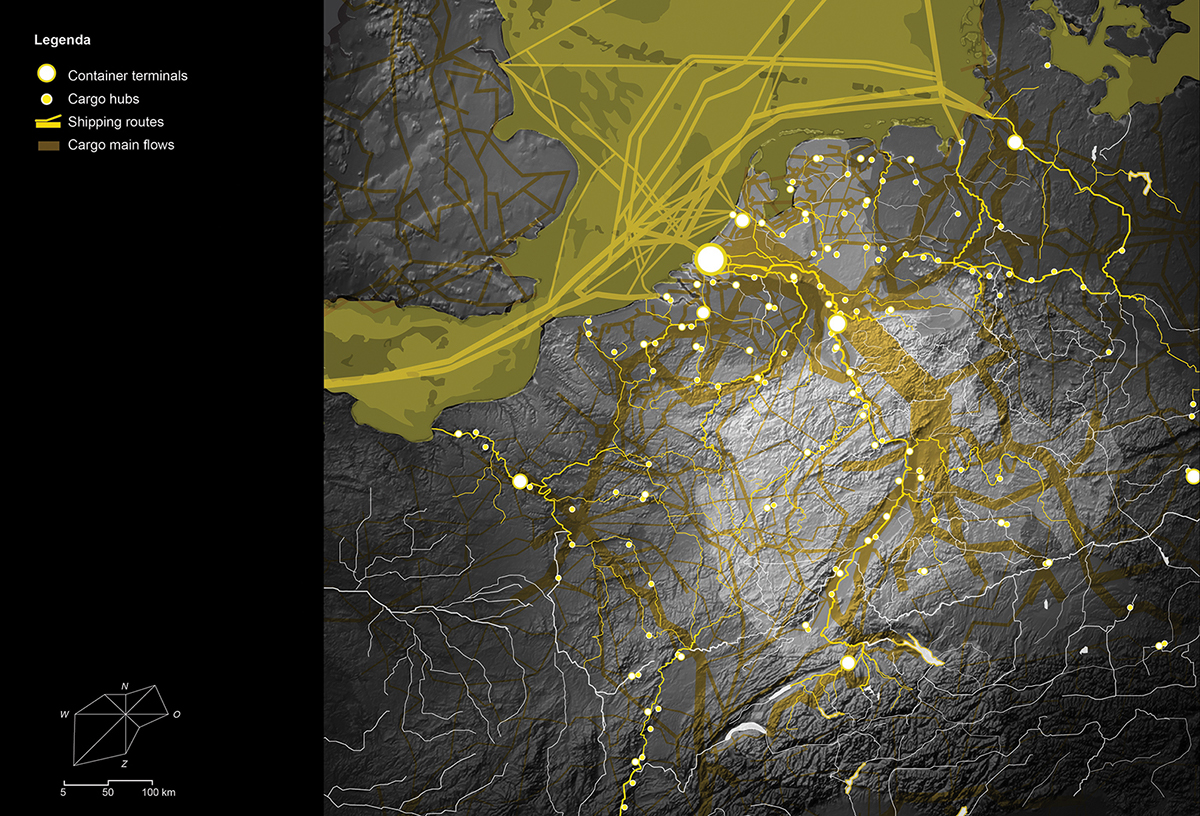
Goods flow:
Rotterdam is one of the largest transit ports in the world, but it's regional economic spinoff is smaller than that of nearby ports.
Rotterdam is one of the largest transit ports in the world, but it's regional economic spinoff is smaller than that of nearby ports.
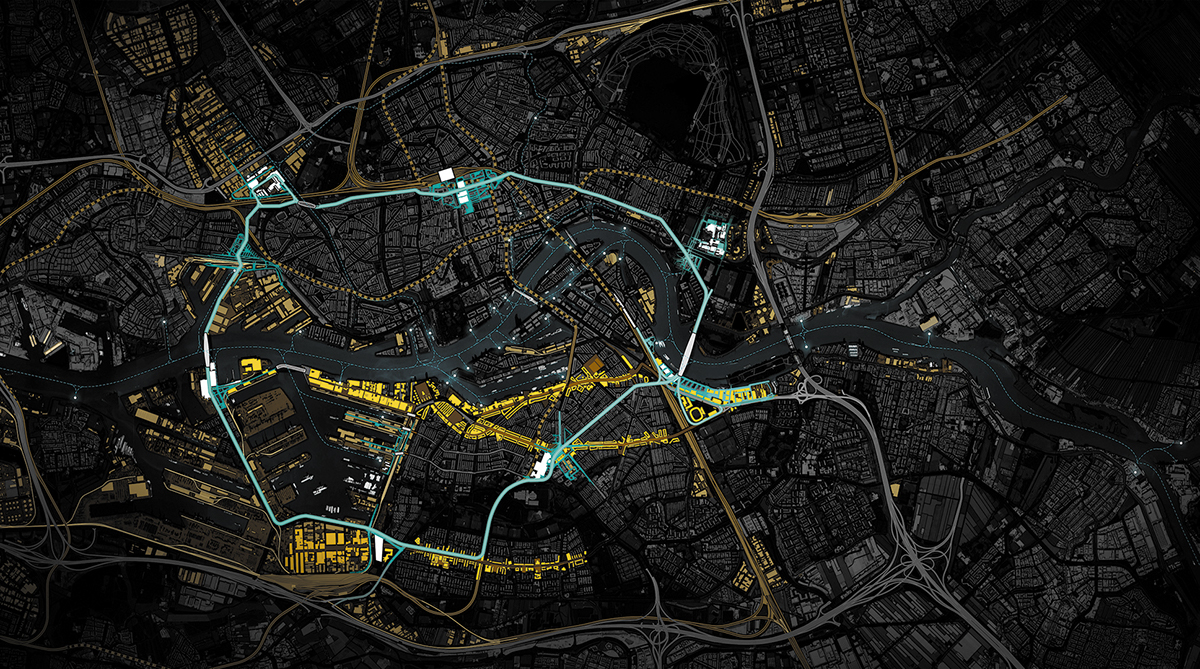
An urban transportation and mobility ring called 'E-loop' connects People Hubs and Cargo Hubs. Specific city boulevards are designated as economic development areas and reorganized to accommodate mixed traffic and new types of businesses.
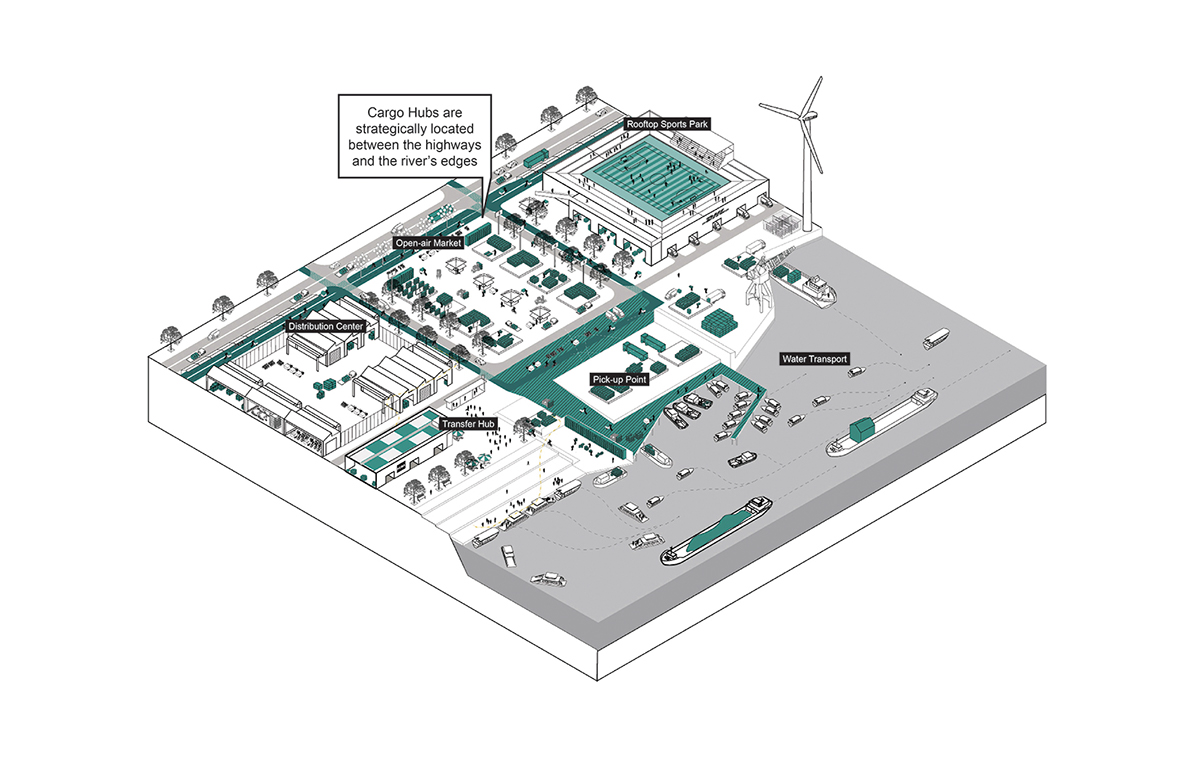
Cargo Hubs connected by an E-loop serve as distribution points for water transport, electric vehicles and bicycle infrastructure.
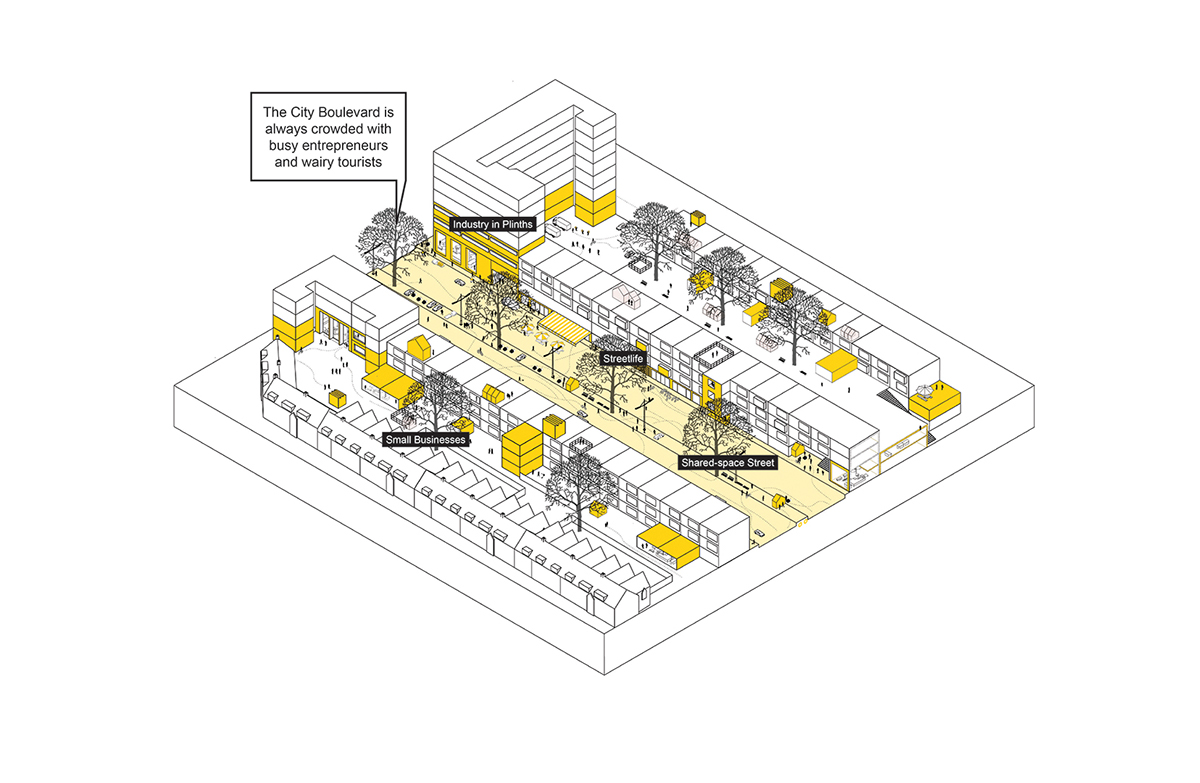
Reorganizing public space and traffic space in specific streets and accommodating new businesses can trigger a process of reindustrialization.
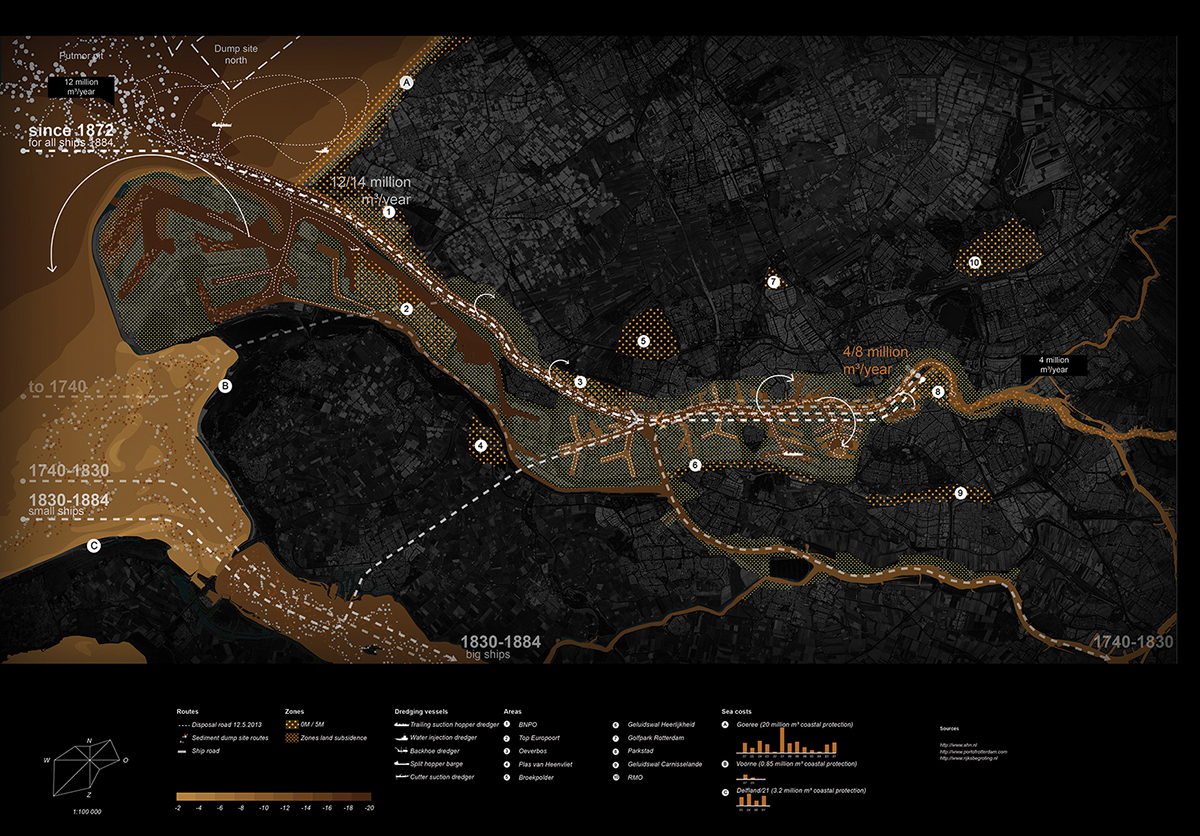
Sand&Sediments flow:
At a point where the coastal and river landscapes converge, Rotterdam dredges over 20 million cubic metres from it's port every year.
At a point where the coastal and river landscapes converge, Rotterdam dredges over 20 million cubic metres from it's port every year.
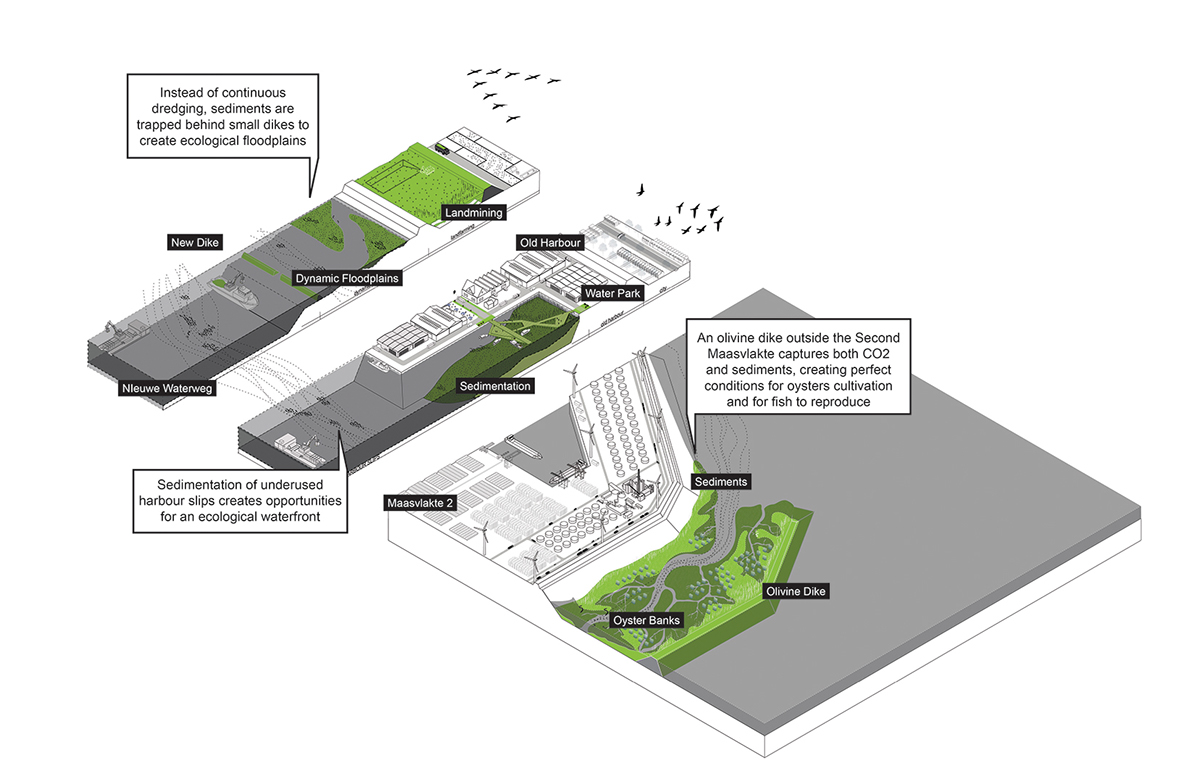
Sediment strategies create new biotopes along the Rhine's waterfront

Creating new biotopes by adapting dredging strategies

Food flow:
On average, Dutchmen throw away 530 kilos a year - 49-75 kilos of this is fruit and vegetable waste, which is currently incinerated.
On average, Dutchmen throw away 530 kilos a year - 49-75 kilos of this is fruit and vegetable waste, which is currently incinerated.
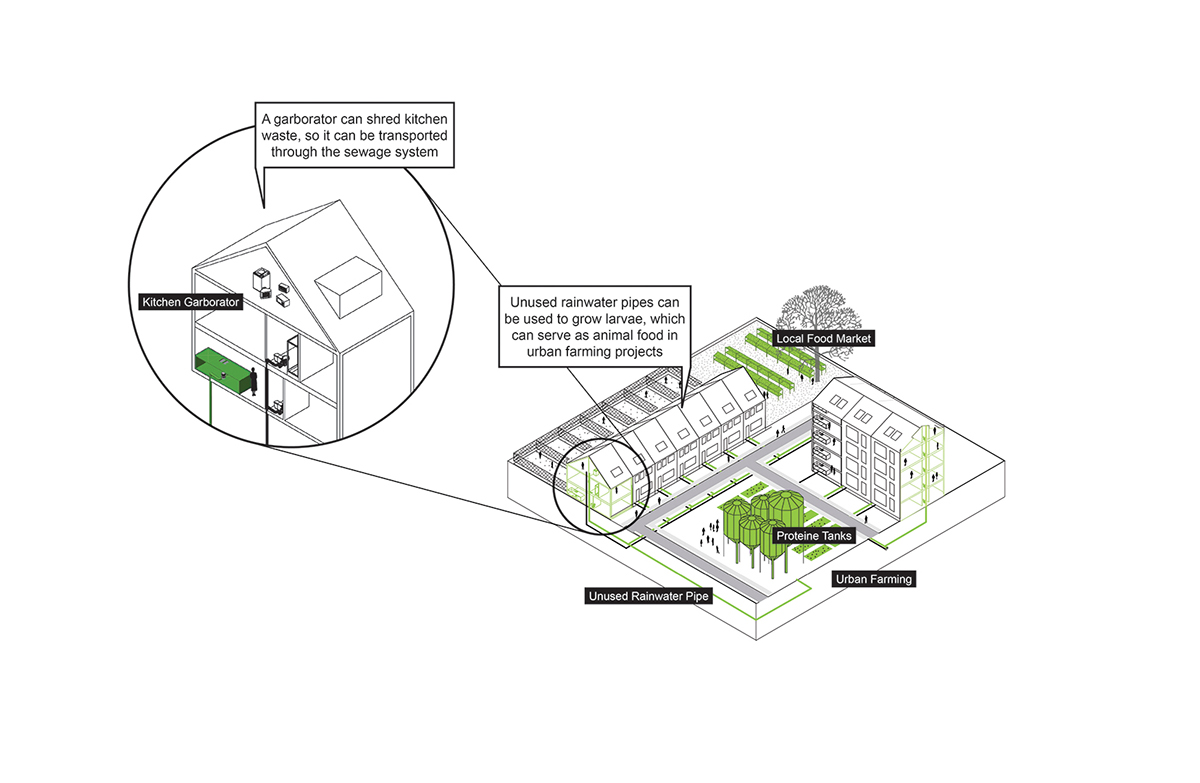
Collecting organic household waste in a Protein Hub using existing unused rainwater pipes can serve urban farming projects.
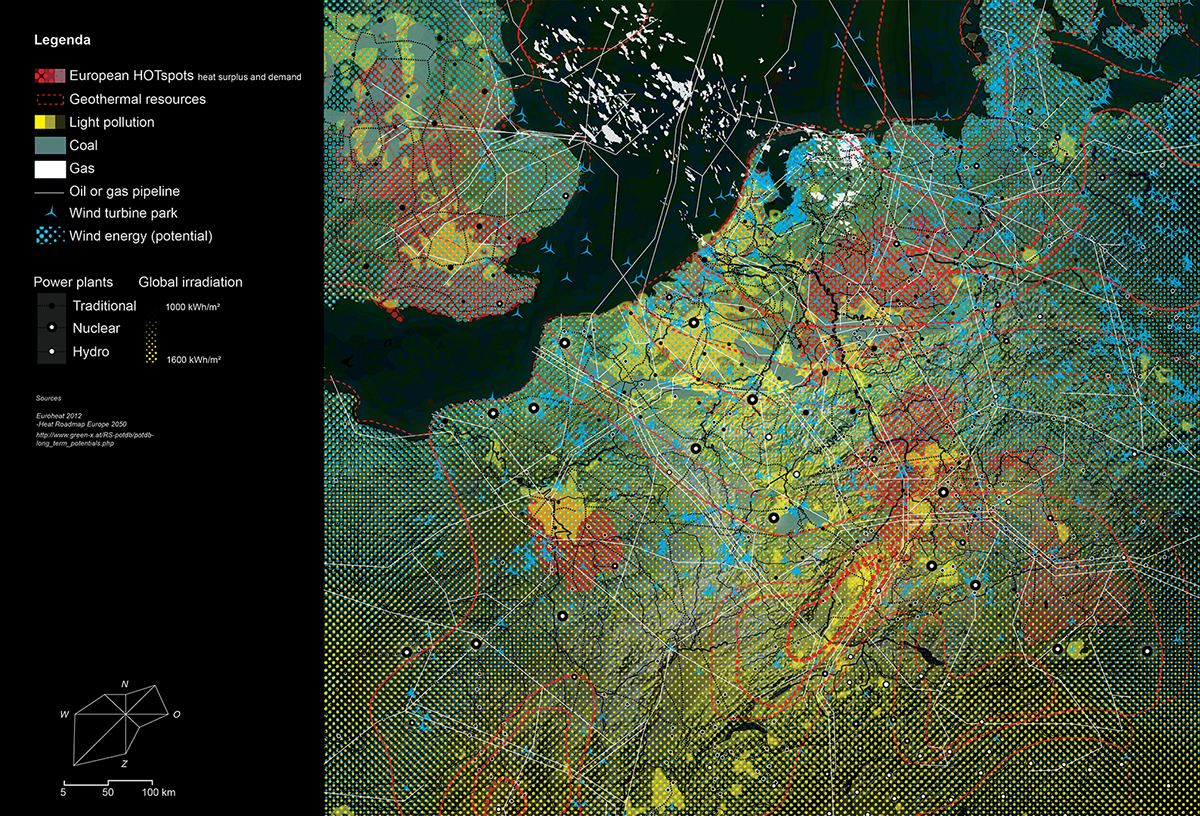
Energy flow:
On average, a Dutch household consumes 466 gigajoules of energy per year. The raw materials for this come from all over the world.
On average, a Dutch household consumes 466 gigajoules of energy per year. The raw materials for this come from all over the world.
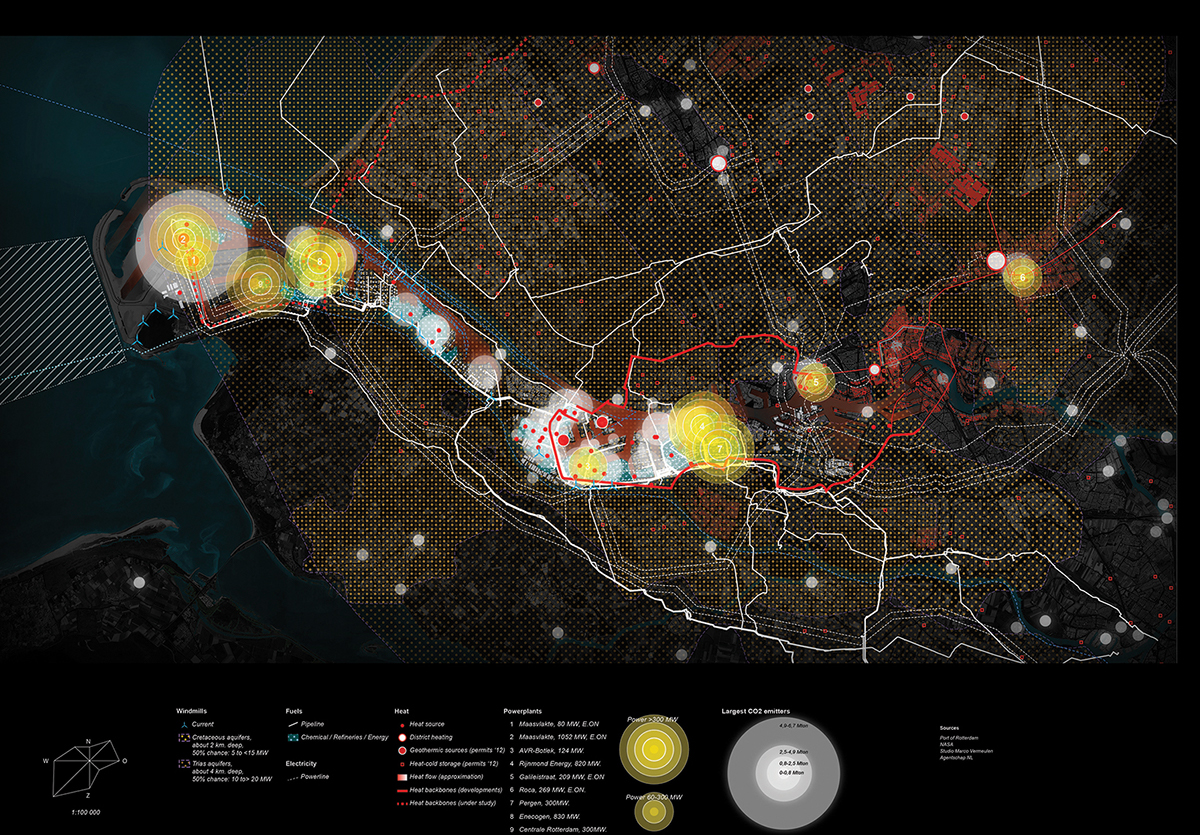
Modern coal-fired power stations realize a return of at most 46 percent - the amount of residual heat is more than twice the equivalent of all the energy generated by the wind turbines on the Dutch side of the North Sea.

Residual heat from power stations, industry and greenhouse areas can be cascaded to city district heating and used to create a comfortable and sustainable public space.

Heat Hubs in urban areas can distribute and cascade thermal energy.
Eric Frijters explains the Heat Hub project to the Minister of Infrastructure and the Environment Melanie Schultz van Haegen.
For more information about the International Architecture Biennal Rotterdam go to www.iabr.nl
Watch presentations and download publications on www.sleutelenaanstofstromen.nl
See more flow animations at IABR's Vimeo channel


